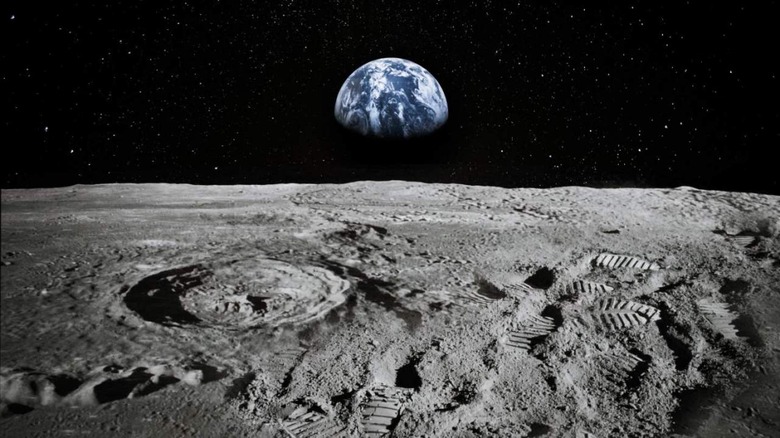NASA moon landing delayed: Here's the bad news
It's been over 50 years since any human set foot on the moon, but NASA has plans to change that. The agency's Artemis program aims to send humans to explore the moon's south pole in the next few years, using a brand new rocket and capsule system. But the path to achieving this ambitious goal hasn't been smooth. Despite an announcement in 2019 that people would be back on the moon within five years, the reality has turned out to be rather slower and more complex. So here's why you might have to wait a while longer before any of us see people back on our planet's favorite satellite.
The date for the crewed landing on the moon was pushed back by NASA in November last year. According to The Guardian, NASA administrator Bill Nelson laid some of the blame for delays on Congress, saying they had not allocated enough funds to cover the extensive costs needed for the mission, such as developing a lunar lander. There were also issues with a legal challenge from Amazon founder Jeff Bezos's Blue Origin company, which claimed that the process through which NASA chose rival SpaceX for developing the landing system was unfair. However, Blue Origin lost its legal challenge so SpaceX will go ahead with its lander development.
The original aim of the Artemis mission was to land humans on the moon by 2024, but that goal was widely considered to be unrealistic. The new goal is to land an uncrewed spacecraft on the moon by 2025 at the earliest, which is a much more achievable timeframe.
"Returning to the Moon as quickly and safely as possible is an agency priority," Nelson said (via NASA). "However, with the recent lawsuit and other factors, the first human landing under Artemis is likely no earlier than 2025."
The Artemis plan
The Artemis program will consist of a series of missions, beginning with an uncrewed Artemis I mission to test out NASA's new rocket and spacecraft, which will eventually carry a crew. The Artemis I will see the Space Launch System rocket and the Orion capsule launched and sent into orbit around the moon for six days before returning.
This will be followed by Artemis II, aimed for 2024, which will be a crewed test flight of the same capsule and rocket, in which the crew will travel around the moon and then back to Earth.
The big mission, when humans will once again set foot on the moon, is Artemis III which is aimed for 2025. A special lander will take astronauts from orbit to the surface of the moon, where they will spend around a week before returning to Earth.
Beyond that, NASA also has plans for further missions to create the Lunar Gateway space station, and to create infrastructure on the moon like habitats, rovers, and scientific equipment.
All of this will be costly though. "Going forward, NASA is planning for at least 10 Moon landings in the future, and the agency needs significant increases in funding for future lander competition, starting with the 2023 budget," Nelson said (via NASA).
As of now, NASA is pushing ahead with testing for the Artemis I Core Stage, recently performing engineering testing to ensure the rocket is ready for its mission (via NASA).

